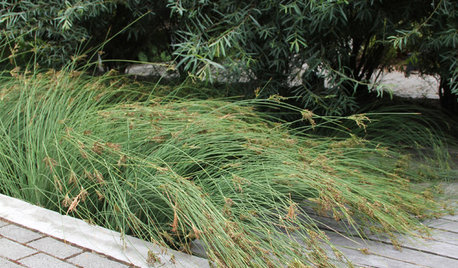Protecting cats outside
catherinet
12 years ago
Featured Answer
Sort by:Oldest
Comments (17)
MissSherry
12 years agolast modified: 9 years agocatherinet
12 years agolast modified: 9 years agocatherinet
12 years agolast modified: 9 years agoladobe
12 years agolast modified: 9 years agocatherinet
12 years agolast modified: 9 years agoKC Clark - Zone 2012-6a OH
12 years agolast modified: 9 years agoladobe
12 years agolast modified: 9 years agoterrene
12 years agolast modified: 9 years agoladobe
12 years agolast modified: 9 years agodocmom_gw
12 years agolast modified: 9 years agocatherinet
12 years agolast modified: 9 years agoMary Leek
12 years agolast modified: 9 years agoKC Clark - Zone 2012-6a OH
12 years agolast modified: 9 years agoMary Leek
12 years agolast modified: 9 years agoKC Clark - Zone 2012-6a OH
9 years agolast modified: 9 years agoKC Clark - Zone 2012-6a OH
9 years ago
Related Stories

HOME TECHTo Feed and Protect: Care for Your Pet From Afar With New Devices
You might miss the nuzzles, but your dog or cat won't miss food, water or monitoring with these high-tech feeders and cameras
Full Story
FENCES AND GATESA Deer Fence Can Be Decorative as Well as Protective
You need a monster-size fence to shelter your garden from deer, but it doesn’t have to look like a monstrosity
Full Story
HOUSEKEEPINGProtect Your House From Winter Water Damage
Avoid costly repairs by learning to spot potential problem areas before water damage is done
Full Story
ENTRYWAYSGlass Doors That Welcome — and Protect Your Privacy Too
These front-door designs let in the light but keep your air-guitar performances safely in-house
Full Story
REMODELING GUIDESHow to Protect (Even Enhance!) Your Relationship While Renovating
No home improvement project is worth a broken heart. Keep your togetherness during a remodel with this wise advice
Full Story
REMODELING GUIDES5 Ways to Protect Yourself When Buying a Fixer-Upper
Hidden hazards can derail your dream of scoring a great deal. Before you plunk down any cash, sit down with this
Full Story
GARDENING GUIDESProtect a Precious Resource With a Rain Garden
Promote pure water and a beautiful landscape with a garden design that makes the most of the rain
Full Story
GARDENING AND LANDSCAPINGPlan for Summer: Protect Your Family With a Safe Pool
Fencing, presence detectors and non-slip materials help keep your pool area accident-free
Full Story
FUN HOUZZ6 Reasons Every House Needs a Cat
Everyone should have a feline fixture as part of their home decor. Here's why
Full Story







ladobe